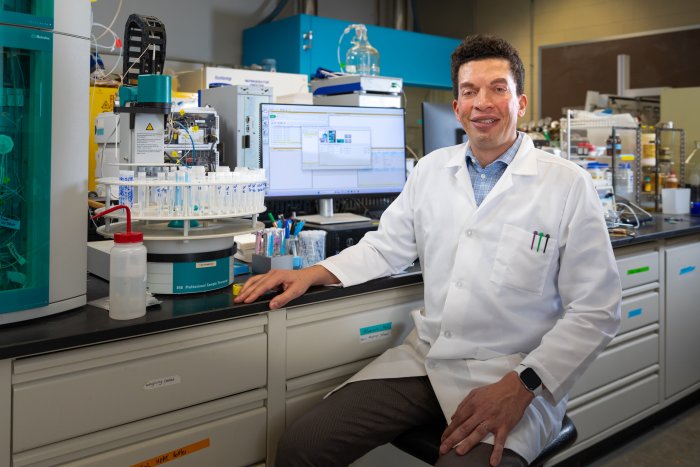Eddie Gonzales Jr. – MessageToEagle.com – Researchers from the United States and Switzerland discovered a new compound in chloraminated drinking water.
Julian Fairey, associate professor of civil engineering. Image source
Inorganic chloramines are commonly used to disinfect drinking water to safeguard public health from diseases like cholera and typhoid fever. It’s estimated that more than 113 million people in the United States alone drink chloraminated water.
The researchers have now identified chloronitramide anion, chemically expressed as Cl-N-NO2-, as an end product of inorganic chloramine decomposition. While its toxicity is not presently known, its prevalence and similarity to other toxic compounds is concerning and warrants further study to assess its public health risk. Simply identifying the compound has been a challenge and breakthrough.
Julian Fairey, an associate professor of civil engineering at the University of Arkansas, was the first co-author on the paper published in Science. Fairey noted that researchers have known about the compound for decades but have been unable to identify it. He himself began trying to unravel the mystery 10 years ago.
“It’s a very stable chemical with a low molecular weight,” Fairey said. “It’s a very difficult chemical to find. The hardest part was identifying it and proving it was the structure we were saying it was.”
This included being able to synthesize the compound in his lab, which had never been done before. Samples were then sent for analysis to his colleague and co-first author on the paper, Juliana Laszakovits, a postdoctoral researcher at ETH Zurich.
Inevitably, there will be questions about the health risks posed by this new compound, which could not be previously evaluated in any toxicity studies.
Fairey, who studies the chemistry of drinking water disinfectants, explained in a previous interview: “It’s well recognized that when we disinfect drinking water, there is some toxicity that’s created. Chronic toxicity, really. A certain number of people may get cancer from drinking water over several decades. But we haven’t identified what chemicals are driving that toxicity. A major goal of our work is to identify these chemicals and the reaction pathways through which they form.”
Identifying this compound is an important step in that process. Whether chloronitramide anion will be linked to any cancers or has other adverse health risks will be assessed in future work by academics and regulatory agencies, such as the U.S. Environmental Protection Agency. At the very least, toxicity studies can now be completed on this compound thanks to this discovery.
“Even if it is not toxic,” Fairey explained, “finding it can help us understand the pathways for how other compounds are formed, including toxins. If we know how something is formed, we can potentially control it.”
Written by Eddie Gonzales Jr. – MessageToEagle.com Staff Writer







